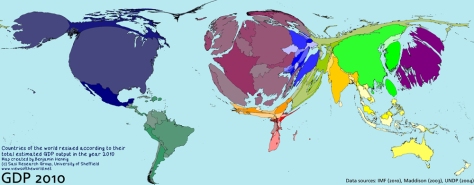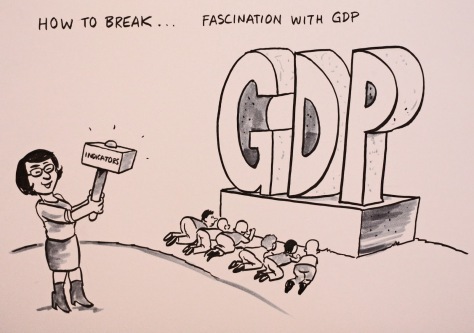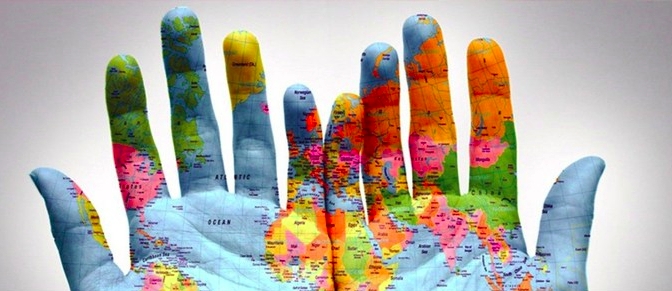What is Development?
The word development essentially means “improvement” from the current situation to something that is considered better. The general idea of development is that it is a process that creates sort of a positive change in growth or progress in the physical, economic, environmental, social and demographic conditions of the world. The purpose of development is to raise the level and quality of life of the population, and the creation or expansion of local regional income and employment opportunities, without damaging the resources of the environment.
History of Development
Development, as we know it today, emerged after the Second World War, as a result of the need to rebuild the war-stricken countries in Europe. Later on, these European and American organisations involved in reconstruction in Europe turned their attention to the problems faced by countries in Africa, Asia, and Latin America as these countries began to gain independence and as people and governments in former colonial countries recognised that they faced both obligations and opportunities in raising economic activities and living standards in their former colonies. In other words, it was the white man’s guilt that drove the development in former colonies, the “third-world” countries.
During Cold war, the idea of development went through rapid changes, as international development assistance was seen as an extension of foreign policy, and the capitalist West (US, Canada, Europe, and Australasia) competed with the socialist East (Soviet Union, Eastern Europe, and China) to attract and keep Asian, African, and Latin American countries within their spheres of influence and trade. The development was redefined by different theorists with different notions of change and different amounts of emphasis on political, social, economic, and technological change.
The collapse of the Soviet Union and the end of the Cold War led to, and coincided with, important changes in the practice and theory of international development, which has since largely been dominated by the west. There have, however, been continuing alternative currents, notably in some Latin American countries, such as Venezuela, Cuba, and Bolivia, in some non-governmental organisations (NGOs), and anti-globalisation and environmental movements in the West, and most recently in the emergence of China as a major investor and economic player in Africa.
The United Nations was formed after the WWII, UN divided the all nations in the world into two categories developed and developing based on the rate of industrialization and economic wealth. Although over the years this has changed and United Nations Development Program (UNDP) now, rates countries’ development annually according to its Human Development Index (HDI), which includes measurements of citizens’ access to healthcare, educational attainment, and standards of living, among other factors.
During 2012, the five countries with the highest HDI rankings were Norway, Australia, United States, Netherlands and Germany, while the five countries with the lowest rankings were Niger, Democratic Republic of Congo, Mozambique, Chad and Burkina Faso, all African countries. In fact, 37 of the 46 states ranked as having low human development are located in Africa. In contrast, 32 of the 47 states considered to be very high human development are found in Europe (Human Development Report 2013). As these figures demonstrate, development is often a highly localized issue, leading to great wealth disparities between distinct global regions.
Ways of Measuring Development
Gross Domestic Product (GDP)

It is a monetary measure of the market value of all final goods and services produced in a period (quarterly or yearly) of time. GDP is commonly used to determine the economic performance of a whole country or region, and to make international comparisons. It does not, however, reflect differences in the cost of living and the inflation rates of the countries. Many environmentalists argue that GDP is a poor measure of social progress because it does not take into account harm to the environment.
1990 Human Development Index

As a response to the limitations of GDP, Amartya Sen and Mahbub ul Haq developed the HDI. The Human Development Index (HDI) is a composite index of life expectancy, education, and per capita income indicators, which are used to rank countries into four tiers of human development. A country scores higher HDI when the lifespan is higher, the education level is higher, and the GDP per capita is higher. It is framed in terms of whether people are able to “be” and “do” desirable things in their life.
Genuine Progress Indicator GPI

It is a metric that has been suggested to replace, or supplement, gross domestic product (GDP). The GPI is designed to take fuller account of the well-being of a nation, only a part of which pertains to the size of the nation’s economy, by incorporating environmental and social factors which are not measured by GDP. For instance, some models of GPI decrease in value when the poverty rate increases. The GPI separates the concept of societal progress from economic growth.
2006: Happy Planet Index HPI

The index is designed to challenge well-established indices of countries’ development, such as the gross domestic product (GDP) and the Human Development Index (HDI), which are seen as not taking sustainability into account. Each country’s HPI value is a function of its average subjective life satisfaction, life expectancy at birth, and ecological footprint per capita.

